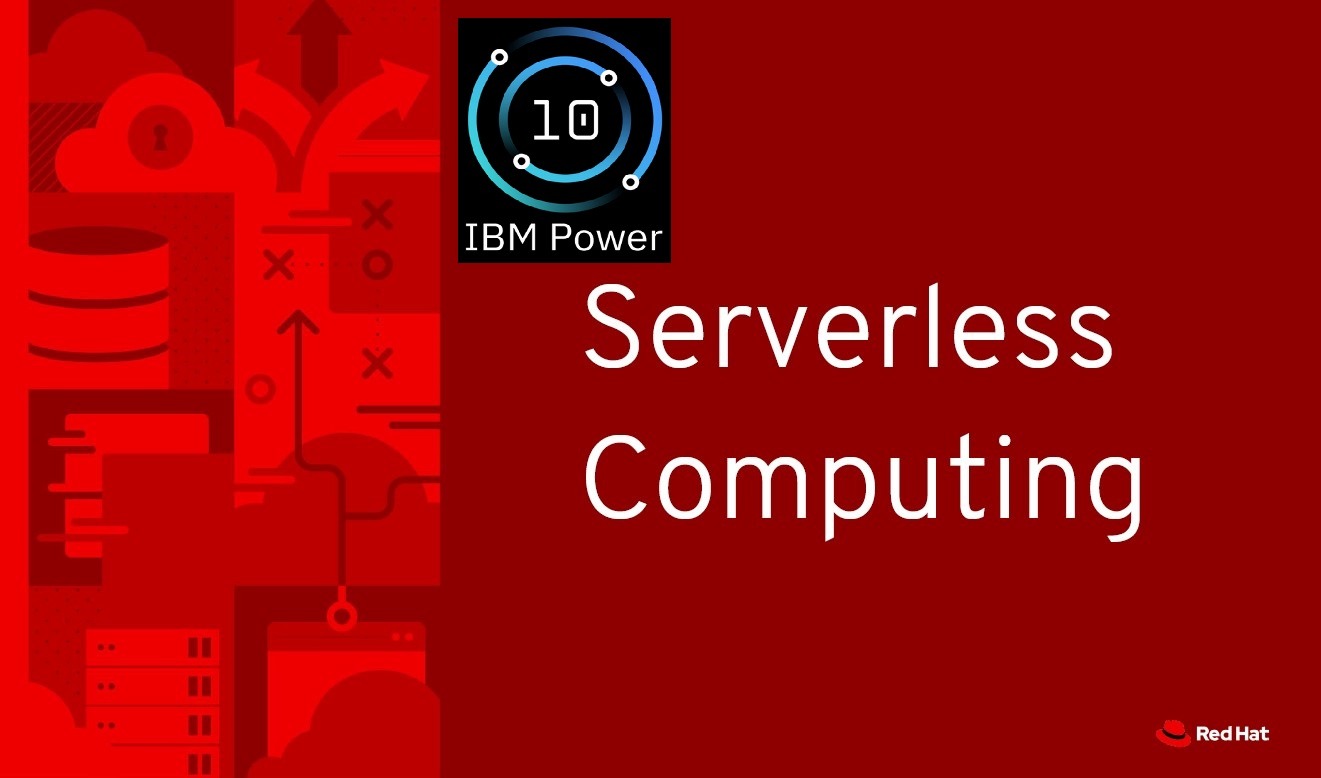In today’s fast-paced development world, efficiency and agility are paramount. Enter OpenShift Serverless, a game-changing solution that’s transforming how applications are built, deployed, and scaled. Let’s dive into what makes OpenShift Serverless a powerful tool for developers and organizations, especially those using IBM Power systems.
What is Serverless Computing?
Serverless computing is a cloud-native development model that abstracts away infrastructure management, allowing developers to focus solely on writing code. With serverless, you don’t need to provision or manage servers – the cloud provider handles all of that for you. This approach not only simplifies development but also optimizes resource utilization and costs.
Introducing OpenShift Serverless
Red Hat OpenShift Serverless brings the benefits of serverless architecture to the robust OpenShift Container Platform. Built on the open-source Knative project, OpenShift Serverless provides a Kubernetes-native way to deploy and run serverless, event-driven applications.
Key features of OpenShift Serverless include:
- Simplified Deployment: Deploy applications without worrying about underlying infrastructure.
- Auto-scaling: Automatically scale applications based on demand, including scaling to zero.
- Multi-language Support: Use your preferred programming languages and frameworks.
- Event-driven Architecture: Build responsive applications that react to events from various sources.
- Hybrid and Multi-cloud Compatibility: Ensure portability across different cloud environments.
OpenShift Serverless on IBM Power LE
Great news for IBM Power users – OpenShift Serverless now supports IBM Power Little Endian (LE) architecture. This means you can leverage the power of serverless computing on your existing IBM Power infrastructure, bringing together the best of both worlds.
Getting Started with OpenShift Serverless
To get started with OpenShift Serverless on IBM Power LE, you’ll need:
- An OpenShift Container Platform cluster with at least 10 CPUs and 40 GB of memory
- The OpenShift Serverless Operator installed
Once set up, you can deploy serverless applications using Knative services. Here’s a simple example:
apiVersion: serving.knative.dev/v1
kind: Service
metadata:
name: hello-serverless
namespace: default
spec:
template:
spec:
containers:
- image: quay.io/multi-arch/knative-samples-helloworld-go:latest
env:
- name: TARGET
value: "OpenShift Serverless on IBM Power"This YAML file defines a Knative service that deploys a “Hello World” application, showcasing how easy it is to get started with serverless on OpenShift.
Advanced Features
OpenShift Serverless offers several advanced features that make it a robust platform for enterprise applications:
Autoscaling
Automatically scale your applications based on incoming traffic. You can configure min and max scales:
metadata:
annotations:
autoscaling.knative.dev/minScale: "2"
autoscaling.knative.dev/maxScale: "10"Traffic Splitting
Easily manage traffic between different versions of your application:
spec:
traffic:
- latestRevision: false
percent: 30
revisionName: v1
- latestRevision: true
percent: 70
revisionName: v2This allows for sophisticated deployment strategies like canary releases or A/B testing.
Benefits for Developers and Organizations
- Faster Time-to-Market: Focus on code, not infrastructure, speeding up development cycles.
- Cost Optimization: Pay only for the compute resources you actually use.
- Simplified Operations: Reduce the operational overhead of managing servers and scaling.
- Improved Resource Utilization: Automatically scale based on demand, optimizing resource usage.
- Flexibility: Run serverless workloads alongside traditional applications on the same platform.
Conclusion
OpenShift Serverless on IBM Power LE represents a significant step forward in application deployment and management. It combines the power of serverless computing with the reliability of IBM Power systems, offering a robust, scalable, and efficient platform for modern applications.
Whether you’re building new cloud-native applications or modernizing existing ones, OpenShift Serverless provides the tools and flexibility to accelerate your development process and optimize your infrastructure costs. As the serverless landscape continues to evolve, OpenShift Serverless stands ready to help organizations stay at the forefront of technology, driving innovation and efficiency in equal measure. Ready to revolutionize your application deployment? Dive into OpenShift Serverless today and experience the future of cloud-native development on IBM Power!

Leave a Reply